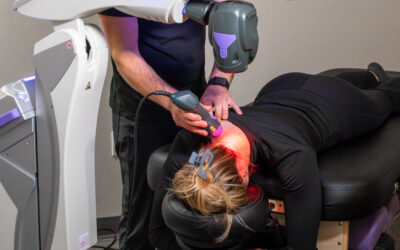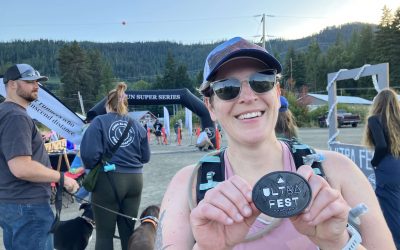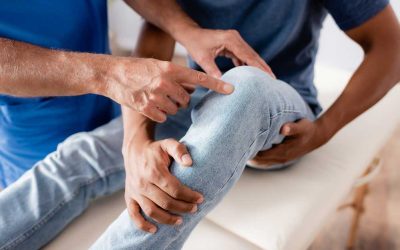
Yard work and back pain go hand-in-hand. In this blog post, I’ll show you how to get your yard in order without getting your body out of order.
Did you Know?
Did you know that according to the American Chiropractic Association (1), back pain accounts for more than 264 million lost work days in one year – that’s two work days for every full-time worker in the country (2).
Furthermore, low back pain costs Americans at least $50 billion in health care costs each year (3).
Add in lost wages and decreased productivity and that figure rises to more than $100 billion (4).
With that information, the plan to rake leaves, pull weeds and move a plant now sounds like a major risk to your health.
Fear not, you came to the right place and I’m here to help you prime your body and make sure that pesky dandy lion does take you out of commission and leave you bedridden for the next week.
Why it happens
So why would anyone suffer from back pain from such a menial task as yard work? Well, I am going to get straight to the point. In most cases, it has to do with capacity. From a physical standpoint, does your body have the capacity to cope with the task before you?
Let face it, yard work, and the positions required and sustained, are not generally trained as part of a normal exercise regiment. Sure, we might do deadlifts and kettlebell swings (more on this later). But while this can be incredibly helpful in building resilience and strength, there is more to the story.
The Rounded Back Debate
From pulling weeds to picking up socks off the floor, many of us have suffered severe back pain by simply allowing our back to round while performing normal daily tasks.
I mean, it has to be because our back is rounded, right?
I mean, let’s follow it to its logical conclusion:
- I’ve been told that I need to keep my back from rounding to prevent lower back pain
- I consciously try to keep my back from rounding when I pick things up
- I pull weeds for 3 hours, get tired, round back and subsequently have lower back pain
- My rounded back caused my back pain
Makes sense, doesn’t it? Now, before going any further, I want to make it abundantly clear that I am in full support for training a “perceived” neural spine during any weight-bearing exercise regime. I say “perceived” because according to Greg Lehman’s 2016 article “Revisiting the Spinal Flexion Debate: Prepare for Doubt” (5), Greg highlights that even during a kettlebell swing with an observed neural spine, the lumbar spine rounds an average of 26 degrees!
So, if you are actually training with a rounded lower back and hopefully getting stronger in that position, then what is actually causing my back to hurt after doing yard work?
Like you, the answer is complex and we should refrain from saying that C = only A + B. We need to also take into account diet, stress, sleep, and many other factors. My point here is that we need to address the aforementioned facts as well as making sure we have the tissue capacity to cope with the demands imposed on it.
Tips to Help Prevent Back Pain
If you are planning to do some yard work tomorrow and looking for some tips, here are some general guidelines and exercises that I think will be very helpful.
I am going to break this up into two sections: tips and exercises.
Here we go.
Tips:
- Get quality sleep the night before
- Eat before going outside and make sure to drink plenty of water during the day
- Listen to music to help you stay relaxed and think about things you are grateful for
Exercises:
- Spinal Articulations: 2 minutes (try to move one segment at a time)
- Cat Cow: 2 minutes (combine the movement with the breath)
- Glute Bridges: 10-20 reps (focus on feeling your glutes through the full range of motion)
- Hardstyle Planks: 3 x 5 breathes (squeeze glutes as hard as you can and pull elbows to your feet)
- Hip Hinges: 10-20 reps (use a wall as a guide and focus on feeling a hamstring stretch)
Summary
In summary, and at the risk of sounding repetitive, it’s all about making sure our capacity (both internal and external) meets our demands. Yes, we need to have a strong backside and doing deadlifts, squats and kettlebell swings will certainly help with that.
However, we do also need to take into account other internal stresses that may be directly or indirectly attributing to our probability of injury. So, keep an eye on your stress, diet, hydration and sleep and don’t let a rounded back scare you. Oh! And once again, because I am telling you not to be afraid of a rounded back does not mean that I give you permission to round your spine when training. Train perfect form, permanently.
Thank you so much for reading this blog. If you are currently experiencing back pain and it just does not seem to get any better — do your body a favor and schedule an appointment at Tangelo and let us help you get back to a life free of limitations.
If you’re experiencing back pain
Thank you so much for reading this blog. If you are currently experiencing back pain and it just does not seem to get any better — do your body a favor and schedule an appointment at Tangelo and let us help you get back to a life free of limitations.
References:
- https://www.acatoday.org/Patients/What-is-Chiropractic/Back-Pain-Facts-and-Statistics
- The Hidden Impact of Musculoskeletal Disorders on Americans, United State Bone and Joint Initiative, 2018.
- In Project Briefs: Back Pain Patient Outcomes Assessment Team (BOAT). In MEDTEP Update, Vol. 1 Issue 1, Agency for Health Care Policy and Research, Rockville, MD.
- Katz JN. Lumbar disc disorders and low-back pain: socioeconomic factors and consequences [review]. J Bone Joint Surg Am. 2006;88(suppl 2): 21-24.
- https://www.greglehman.ca/blog/2016/01/31/revisiting-the-spinal-flexion-debate-prepare-for-doubt



